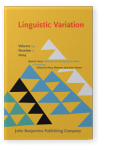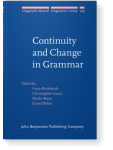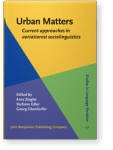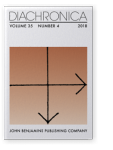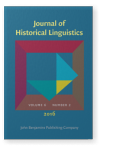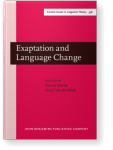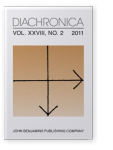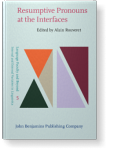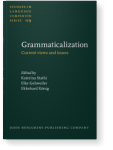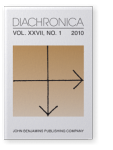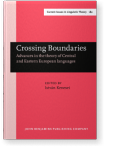David Willis
List of John Benjamins publications for which David Willis plays a role.
Journal
Title
Continuity and Change in Grammar
Edited by Anne Breitbarth, Christopher Lucas, Sheila Watts and David Willis
[Linguistik Aktuell/Linguistics Today, 159] 2010. viii, 359 pp.
Subjects Functional linguistics | Generative linguistics | Sociolinguistics and Dialectology | Syntax | Theoretical linguistics
2021 Testing models of diffusion of morphosyntactic innovations in Twitter data Urban Matters: Current approaches in variationist sociolinguistics, Ziegler, Arne, Stefanie Edler and Georg Oberdorfer (eds.), pp. 253–278 | Chapter
Established models of the spatial diffusion of linguistic innovations vary in their relationship to population density. Differences in prediction between the gravity models (Trudgill 1974), in which probability of diffusion is sensitive to settlement size, and the traditional wave models can be… read more
2018 Pragmatic differentiation of negative markers in the early stages of Jespersen’s cycle in North Germanic Diachronica 35:4, pp. 451–486 | Article
This article investigates the pragmatic function of new negative markers during incipient renewal of negation in ‘Jespersen’s cycle’. We outline a typology of these markers, suggesting a pathway by which they begin as specialized for use with discourse-old propositions and later expand to… read more
2016 The rise and fall of a minor category: The case of the Welsh numerative Journal of Historical Linguistics 6:2, pp. 297–339 | Article
Some languages use a special form of the noun, a “numerative”, after some or all numerals. In such languages, a distinct numerative is typically not available for all nouns, but rather only for a small subset, forming a morphological “minor category” (Corbett 2000). We examine how such a system… read more
2016 Exaptation and degrammaticalization within an acquisition-based model of abductive reanalysis Exaptation and Language Change, Norde, Muriel and Freek Van de Velde (eds.), pp. 197–225 | Article
This article considers the relationship between exaptation and degrammaticalization. Both may involve obsolescent material being re-used, to express an existing grammatical category or a category not previously encoded. The processes involved are familiar ones: reanalysis triggering category… read more
2011 Review of van Gelderen (2009): Cyclical Change Diachronica 28:2, pp. 281–289 | Review
2011 The limits of resumption in Welsh wh-dependencies Resumptive Pronouns at the Interfaces, Rouveret, Alain (ed.), pp. 189–222 | Article
This chapter considers the analysis of gap and resumptive wh-dependencies, especially relative clauses, in Welsh. It is argued that, despite first appearances, all wh-dependencies formed on unembedded direct-object positions (and some embedded ones), including the direct object of an aspectual… read more
2010 Introduction: Continuity and change in grammar Continuity and Change in Grammar, Breitbarth, Anne, Christopher Lucas, Sheila Watts and David Willis (eds.), pp. 1–10 | Article
The present volume brings together 16 contributions selected from papers presented at the conference on Continuity and Change in Grammar that took place at the University of Cambridge 18–20 March 2008. The aim of the conference was to foster an exchange of ideas on various aspects of linguistic… read more
2010 Degrammaticalization and obsolescent morphology: Evidence from Slavonic Grammaticalization: Current views and issues, Stathi, Katerina, Elke Gehweiler and Ekkehard König (eds.), pp. 151–178 | Article
Recent work in grammaticalization has highlighted cases where former inflectional affixes have gained independence on an unexpected path towards clitic or full-word status. Such cases challenge the hypothesized unidirectionality of grammaticalization at the formal level (word > clitic > affix).… read more
2010 Motivating the emergence of new markers of sentential negation: The case of Welsh ddim Diachronica 27:1, pp. 110–156 | Article
This article investigates the historical emergence of postverbal negation in Welsh. Welsh undergoes a shift from preverbal negation (Middle Welsh ny(t)) to postverbal negation (Present-day Welsh ddim “not” < Middle Welsh dim “at all” < dim “thing, anything”) (Jespersen’s Cycle). In Middle Welsh,… read more
1999 The Structure of Old Russian Periphrastic Verbal Construction Crossing Boundaries: Advances in the theory of Central and Eastern European languages, Kenesei, István (ed.), pp. 45–66 | Article
